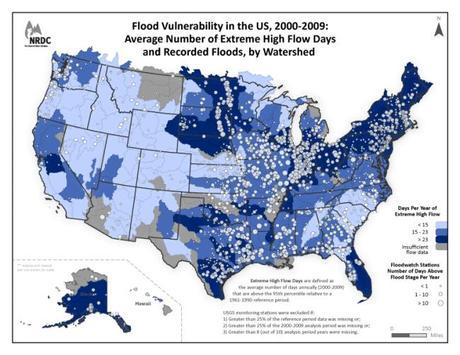
The National Flood Insurance Program (NFIP), which is supervised by the Federal Emergency Management Agency, is set to increase premiums in 2014. The cost is steep for Florida, which holds 37 percent of the federal flood insurance program’s policies.
Homeowners who are renewing their insurance face skyrocketing premiums, up to 20 percent in communities like Pinellas County. he high premiums are a result of changes to the NFIP, being implemented by the Biggert-Waters Flood Insurance Reform Act.
With Florida having more coastline than any state, Floridians have more flood policies and pay more into the program. The flood insurance rate increases affect Florida home sales and other title transfers. Although Florida theoretically stands the highest chance of flooding, Hurricane Katrina and Superstorm Sandy led to more NFIP claims being made in other states than Florida. Not only does Florida have the highest number of subsidized flood insurance policies, it is the state with the highest exposure to pay into claims, at $475 billion. Texas and Louisiana have the second and third highest exposure, at $162 billion and $112 billion, respectively.

According to a recent report by the Center for Competitive Florida, which analyzes the changes in the NFIP, Superstorm Sandy claims were estimated at up to $15 billion. Comparatively, Florida had $407 million in Tropical Storm Isaac claims in 2012.
Another study, conducted by the Wharton Center for Risk Management and Decision Processes, compared the amount of claims paid to the amount of premiums collected and revealed that Florida paid $3.60 for every dollar NFIP paid in a flood claim anywhere. The study showed that 11 states received more in payouts than was paid in premiums by the states’ policyholders over the course of 30 years.
Currently, the NFIP is $24 billion in debt. Thus, Congress passed the Flood Insurance Reform Act. The goal of the reforms is to reduce the debt by eliminating subsidized rates on older homes that don’t represent the properties’ true flood risk, and make the program more stable. Previously, rate increases were capped at 10 percent, but some Floridians risk paying four or six times their current rate, or even more.
Florida legislators are attempting to get a delay or roll back of the new rates passed before the session closes for the year, but Congress has yet to agree to delay any changes to the implementation of the Biggert-Waters Flood Insurance Reform Act.

